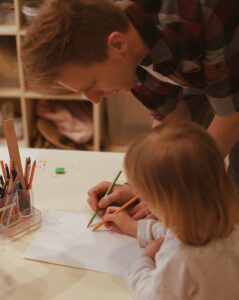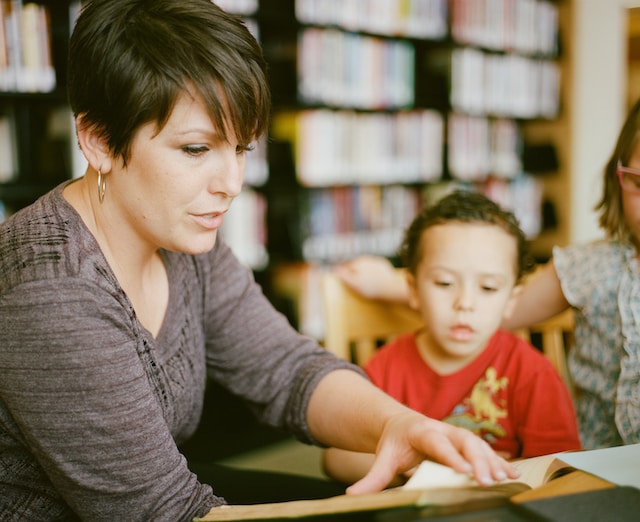Running a child nursery, whether in public childcare or a private nursery in Bearsden, such as in Kirktonholme, involves a complex array of responsibilities, such as creating a safe and stimulating environment all the way to meeting rigorous regulatory standards.
In the UK, nursery managers, staff, and educators meet these challenges by combining their passion for child development with adherence to best practices. Our guide aims to provide nursery managers, staff, and educators with the insights and strategies necessary to create an exceptional early learning environment. We cover essential aspects such as safety standards, educational materials, and staff training, all tailored to the unique context of UK nurseries. Read on as we explore how to foster an educational yet nurturing, and safe atmosphere for the littlest members of our society.

Safer Practices for a Nursery in Bearsden
Implementing safer nursery practices is vital in a nursery in Bearsden because it is one of the primary methods for ensuring children and staff safety. Safer nursery practice encompasses various actions designed to keep the nursery neat and tidy, out of reach of dangerous items and appropriate precautions taken against injury or illness. Furthermore, training staff on these practices and providing record-keeping systems to demonstrate compliance are all part of this strategy.
A safe nursery must also incorporate proper anchoring and positioning of furniture to reduce the risk of tipping accidents. For instance, placing heavy items at the bottom of dressers while lighter ones are on top will help redistribute weight more evenly across their surfaces and stabilise furniture. Furthermore, installing corner and edge protectors such as corner guards (around £5) on furniture pieces may help minimise bumps and bruises during falls, while opening drawers or using safety latches on all furniture will lower injuries from children who try climbing on them while doing so.
Encourage and teach both children and staff members proper handwashing techniques to reduce the spread of germs. Both staff members and children should learn and practice proper handwashing techniques to reduce the spread of germs in a healthy nursery.
Nurseries require responsible waste management practices in order to keep children safe. This involves disposing of all hazardous products correctly, including household cleaners, laundry detergents, button batteries, small magnets, and any other potentially harmful items that might fall into children’s hands.
This table provides a methodical approach to the management of child nurseries in Bearsden, focusing on safety, education, and operational best practices.
| Step | Aspect | Best Practice | Considerations |
|---|---|---|---|
| 1 | Safety Standards | Adhere to UK safety regulations; conduct regular risk assessments. | Keep up-to-date with Ofsted regulations and guidelines. |
| 2 | Learning Environment | Create stimulating and age-appropriate learning spaces. | Include sensory, motor skill, and cognitive development areas. |
| 3 | Staff Qualifications | Ensure all staff are properly qualified and trained. | Regular CPD and safeguarding training. |
| 4 | Child-to-Staff Ratio | Maintain appropriate ratios as per UK statutory requirements. | Ratios vary by age group; ensure compliance. |
| 5 | Nutrition and Meals | Provide balanced and nutritious meals following UK dietary guidelines for children. | Cater to dietary needs and allergies. |
| 6 | Health and Hygiene | Implement robust hygiene practices and health policies. | Regular cleaning, handwashing protocols, illness policies. |
| 7 | Parental Engagement | Foster strong communication and engagement with parents. | Use digital platforms, meetings, and regular updates. |
| 8 | Outdoor Play and Learning | Provide safe and engaging outdoor learning experiences. | Regularly inspect and maintain outdoor equipment. |
| 9 | Inclusivity and Diversity | Create an inclusive environment that respects diversity. | Training on diversity, inclusion, and cultural awareness. |
| 10 | Emergency Procedures | Have well-defined and practiced emergency and evacuation procedures. | Regular drills and staff training on emergency responses. |
| 11 | Educational Resources | Utilise a variety of educational materials and methods. | Balance between digital and physical resources. |
| 12 | Continuous Improvement | Regularly assess and improve nursery practices and facilities. | Seek feedback from staff, parents, and external audits. |
Reduce the Toxic Chemicals in the Nursery Space.
Many chemicals found in traditional nursery products, from paints to toys, may be dangerous for infants, children, and adults. Luckily, there are plenty of eco-friendly and greener solutions that will create a safer and greener nursery experience!
Chemicals such as VOCs (volatile organic compounds), flame retardants, and phthalates are present in numerous baby products and may off-gas into the environment. To reduce exposure, select organic cloth diapers and wipes, natural rubber pacifiers, wooden teethers, and furniture free from these harmful substances; additionally, try to keep your home as fresh and clutter-free as possible to minimise exposures to toxic chemicals.
Harmful chemicals may also pass from mother to child through gestation or breastfeeding, making it especially important for expecting mothers to limit their exposures in the months leading up to their due dates. When redecorating or renovating a nursery, it is crucial to complete the project at least three months in advance and ensure proper ventilation afterward.
Many new parents anticipate an eagerness to ‘nest’ in the months before giving birth by redecorating, painting, and purchasing new furniture—activities that can introduce harmful chemicals into the home environment. Therefore, make the necessary changes as far ahead as possible before your due date arrives.
Building materials, furniture finishes, glues and adhesives, cleaning products, and some cleaning supplies contain toxic chemicals such as formaldehyde, PFCs (perfluorinated chemicals), and PFASs (perfluoroalkyl substances). Exposure can result in allergies, respiratory illnesses, and other health concerns for children as well as adults. To reduce exposure, it’s best to choose low- or no-VOC paints, wood floors, and furnishings, as well as non-toxic wood glues and preservatives, for maximum exposure reduction.
One way to reduce toxic chemicals in your nursery is through diet. While certain fruits and vegetables may contain higher concentrations of heavy metals, selecting from a wide variety will ensure that everyone in your family receives proper nutrition.

Amelia Rose is a fashion writer with a passion for exploring the latest trends, timeless styles, and beauty insights. She specializes in creating engaging content that inspires readers to express themselves through fashion while staying informed about industry innovations and seasonal collections.
